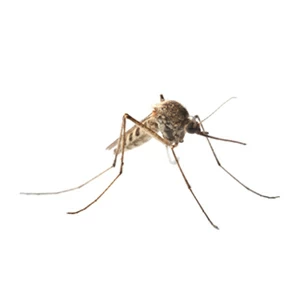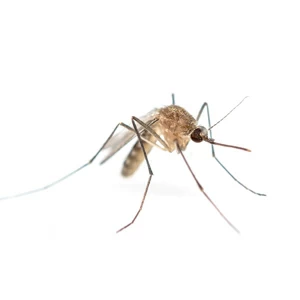


Bugging
You?
Mosquitoes
There are several species that you can encounter. Being that they have been around for millions of years, it is safe to say every living creature has experienced them. Everyone has had mosquitoes buzzing in their ear or leaving itchy bites in their body. But did you know that only the female is biting you?
It would be best if you were concerned, as they are vectors of malaria, yellow fever, encephalitis, West Nile, and the recent Zika virus. An Apex mosquito control tech can review conditions present in your surroundings and provide a customized mosquito control service to reduce the presence of this insect!

Aedes Mosquito
Identification Tips:
- Color: White and black striped body
- Legs: 6
- Size: A small to medium-sized mosquito, approximately 4 to 7 millimeters. Females are more significant than males
- Identifying Characteristics: Look at the standing water in your yard or your house. Standing water is a favorite breeding ground for mosquitoes – typically placing their eggs and larvae there.
Characteristics of this insect:
- The larvae position is a common characteristic of the Aedes mosquito. The larvae hang at a specific angle to the water’s surface. Some experts associate the situation to the shape of the larvae
- Aedes mosquitoes also have a unique standing position. They stand with a straight body parallel to the surface
- Aedes mosquitoes typically bite during the day versus the night
- Aedes mosquitoes have been known to transmit the following viruses and diseases: dengue fever, yellow fever, West Nile fever, chikungunya, eastern equine encephalitis, and Zika virus.

Culex Mosquito
Identification Tips:
- Color: The main body is brown. The proboscis, thorax, wings, and tarsi are darker than the rest of the body, whereas the head is light brown.
- Legs: 6
- Size: 4–10 mm (0.16–0.39 in)
- Identifying Characteristics: The Culex Mosquito prefers to bite at dawn or after dusk. It is known as the common house mosquito.
Characteristics of this insect:
- Culex Mosquitoes lay their eggs in small bodies of standing water, such as buckets, puddles, pools, and ditches
- The Culex Mosquito is not considered as much of a threat to our health as other mosquito species, such as the Anopheles and Aedes mosquitoes. However, Culex can still transmit several diseases that can be potentially fatal to humans. They have been known to contribute to the spreading West Nile Virus, filariasis, and encephalitis.
- The Culex Mosquito lives for 10 to 14 days. However, a female can lay 100 to 300 eggs at one time.
- Removing objects that collect water on your property and applying mosquito repellent will help lower the likelihood of disease.

Anopheles Mosquito
Identification Tips:
- Color: dark brown to black
- Legs:6
- Size:1/8 to 3/4 inches
- Identifying Characteristics: Adult females lay about 50 to 200 eggs at a time. Anopheles lay their eggs individually instead of in ” glued ” groups. The eggs float on the surface of the water.
Characteristics of this insect:
- The Anopheles mosquito is known as the Malaria Mosquito for being the disease’s primary vector. The mosquito also transmits heartworms in dogs and other animals.
- Anopheles mosquitoes bite primarily from dusk to dawn. However, they may bite during daylight hours if the area is dark or shaded.
- Their resting position can recognize adult Anopheles. Both males and females rest with their abdomens sticking up in the air, perpendicular to the surface.
